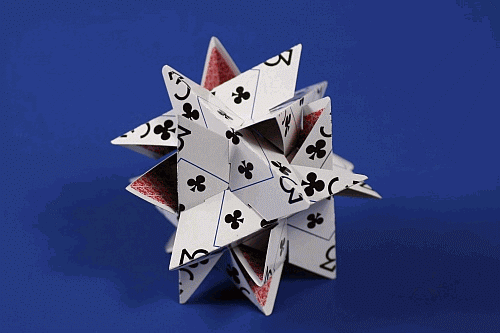
This puzzle/sculpture is my G4G10
exchange item. It is a puzzle for you to assemble and
makes an interesting 15 cm diameter sculpture. The form
derives from the third stellation of the rhombic dodecahedron,
but don't worry about that. I have pre-cut four slits in each
card with the proper lengths and angles for them to hold
together.
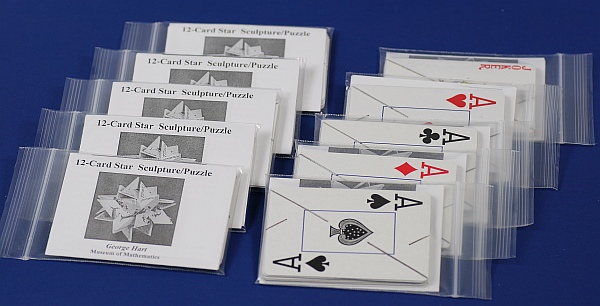
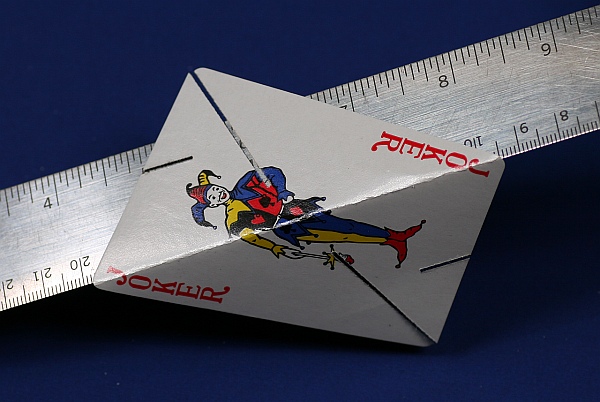
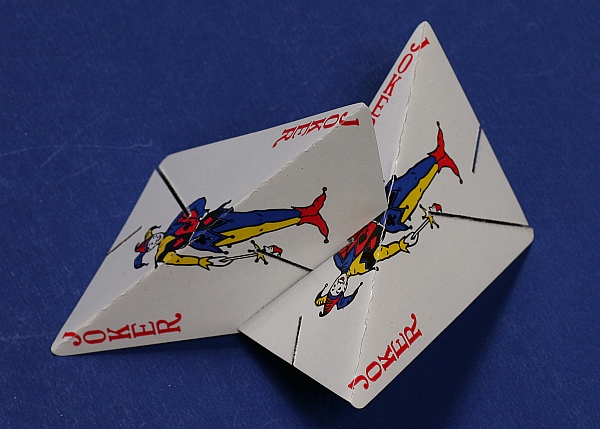
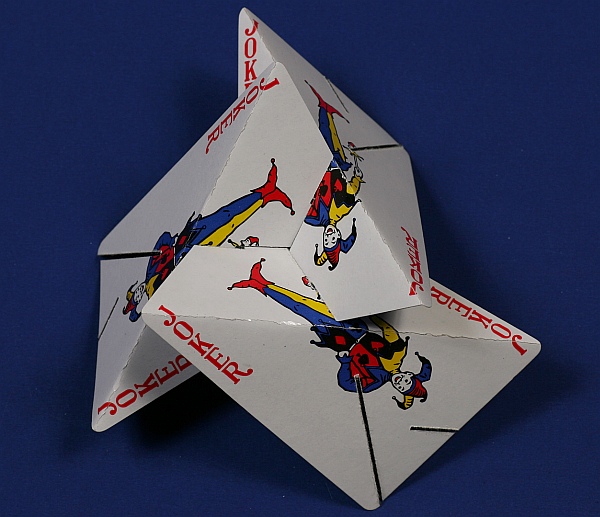
Step 3 is the tricky step. Add a third card so the short slot of each card slides into the long slot of the next card, in a 3-way cycle. This takes some experimenting at first, but once you master it, it is very quick and easy. You won't know if it is correct unless you check the back.
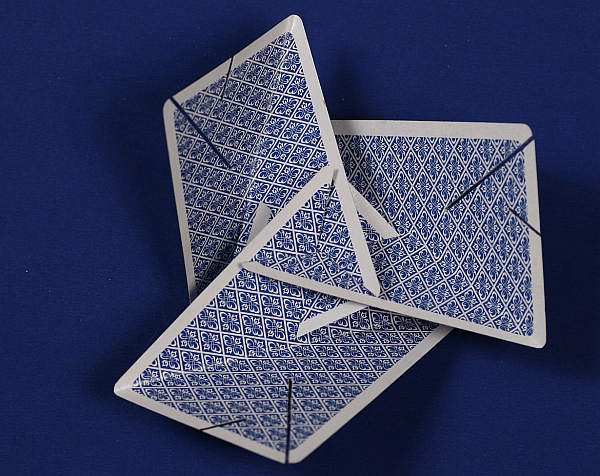
If your 3-way cycle is correct, the back shows a white triangle. If not, you can gently manipulate the corners on the back and slide something through something so you see the white triangle shown. These triangles lock the cards together, so if you do not master this step, everything will fall apart.
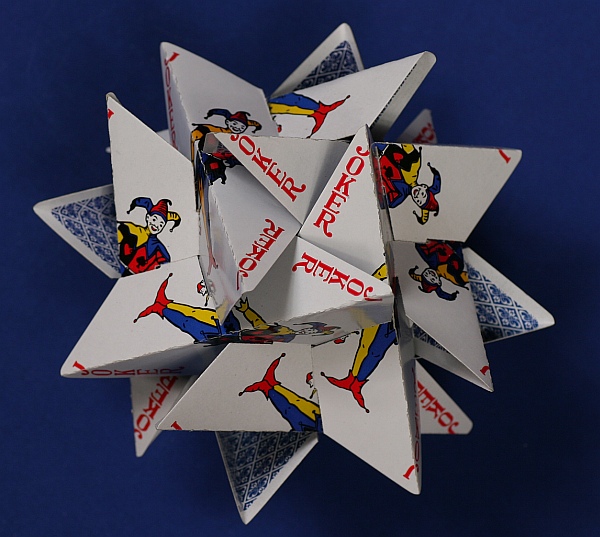
Step 4 and beyond is to keep making that same 3-way connection everywhere. After making your third 3-way joint, you will see that a card you just added can connect to a card from the first 3-way joint to close a cycle with four points, as in the center of the above image.
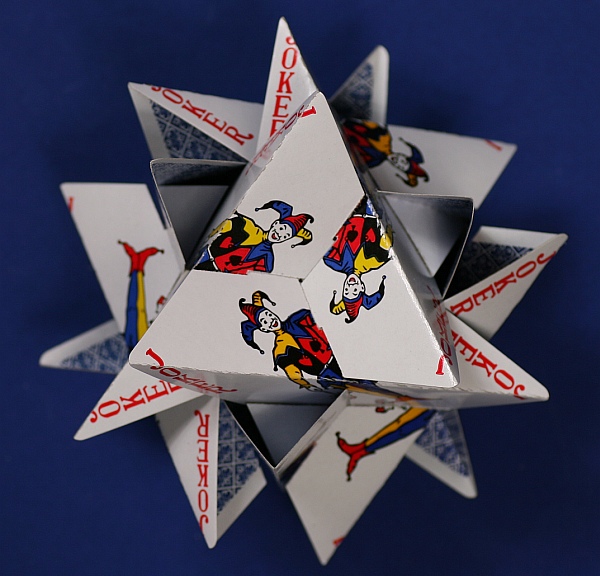
Don’t get upset if it tends to fall apart. The cards are slippery, but everything locks together securely when the twelfth piece is inserted. When complete, you will see eight 3-way cycles as in the image above.

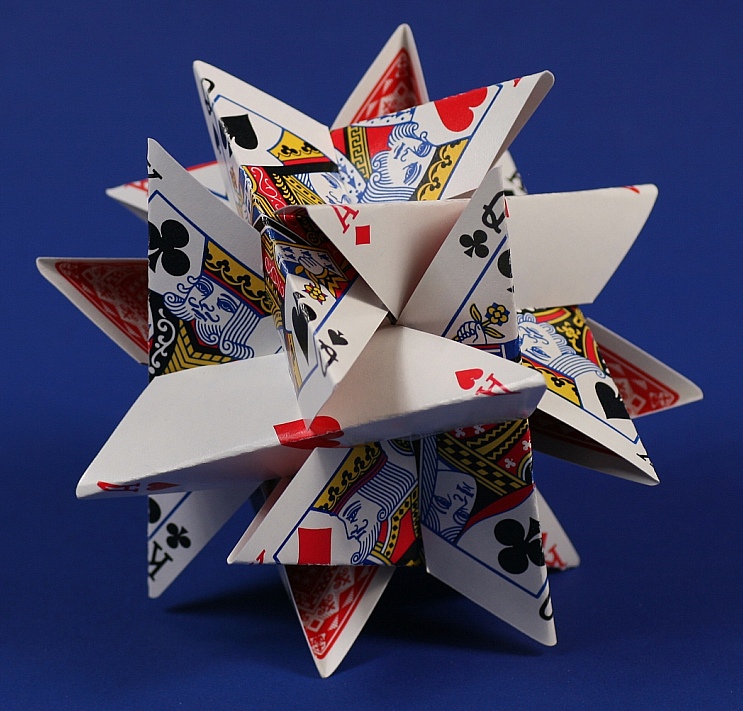

It comes packaged as a pack of
thirteen identical pre-slit cards and a sheet of
instructions. You can see what card you received by looking
on the back of the bag. You only need twelve cards. The
thirteenth is a spare in case something horrible happens.

Step 1 is to fold each card back along the uncut diagonal, as shown
above. A thin
metal ruler makes this easy.
Just line the diagonal over the edge and push down with
your thumb. Crease well, then open to a 60
degree interior angle. (If you happen to have a table or
counter with a sharp edge, that also works well for
creasing.) No additional bending or creasing is necessary.
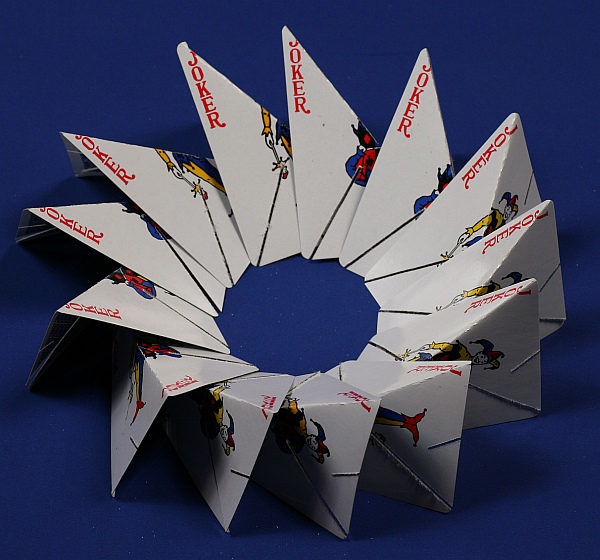

The twelve cards are all
identical, with the same four slots and the same crease.

Step 2 is to slide a short slot into a
long slot, as shown above. The lengths work out so the
edge of one card just comes up to the crease of the
other card. Keep in mind how easy this is if you get
frustrated later, because every connection in this
puzzle is exactly like this.

Step 3 is the tricky step. Add a third card so the short slot of each card slides into the long slot of the next card, in a 3-way cycle. This takes some experimenting at first, but once you master it, it is very quick and easy. You won't know if it is correct unless you check the back.

If your 3-way cycle is correct, the back shows a white triangle. If not, you can gently manipulate the corners on the back and slide something through something so you see the white triangle shown. These triangles lock the cards together, so if you do not master this step, everything will fall apart.

Step 4 and beyond is to keep making that same 3-way connection everywhere. After making your third 3-way joint, you will see that a card you just added can connect to a card from the first 3-way joint to close a cycle with four points, as in the center of the above image.

Don’t get upset if it tends to fall apart. The cards are slippery, but everything locks together securely when the twelfth piece is inserted. When complete, you will see eight 3-way cycles as in the image above.

If you
want to make more of these stars, you can print out the
above template and scale it so you can copy it on to
your own cards.

This
design also looks cool with an assortment of different
cards from one deck. Here you can see a version
made from the Ace, King, and Queen of each suit.
It exhibits some interesting combinatorics: The
three cards of each suit outline a triangular prism,
each 3-way vertex consists of an Ace, a King, and a
Queen from three different suits, and each 4-way
vertex displays "two pairs" and all four suits.
See if you can reproduce it.
And here is the talk I
gave at G4G10 on Rubber Band Puzzles, with solutions